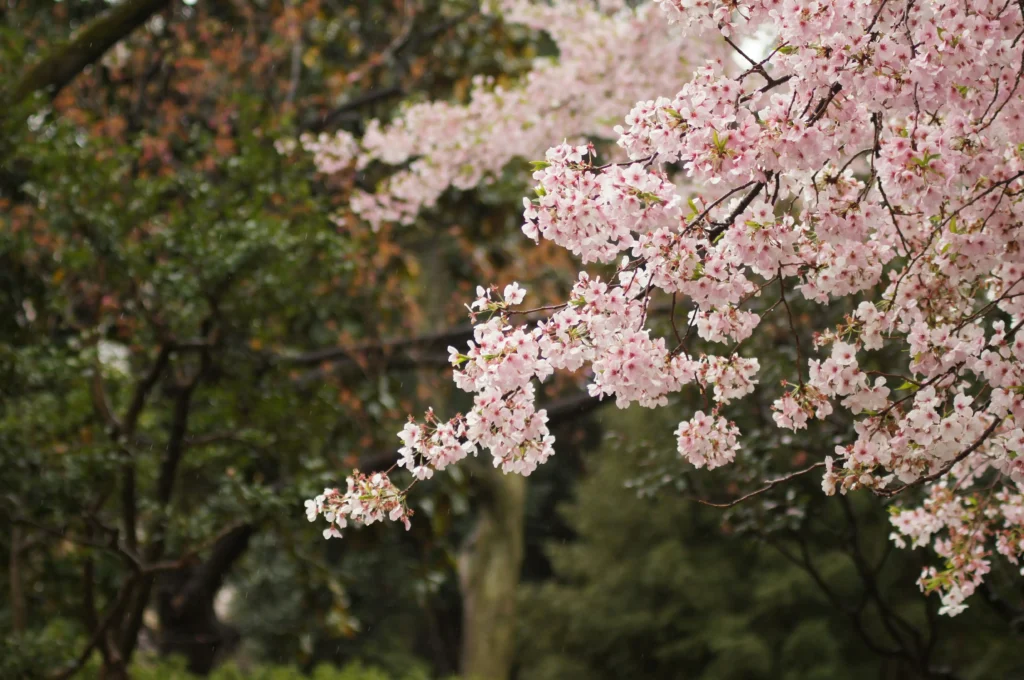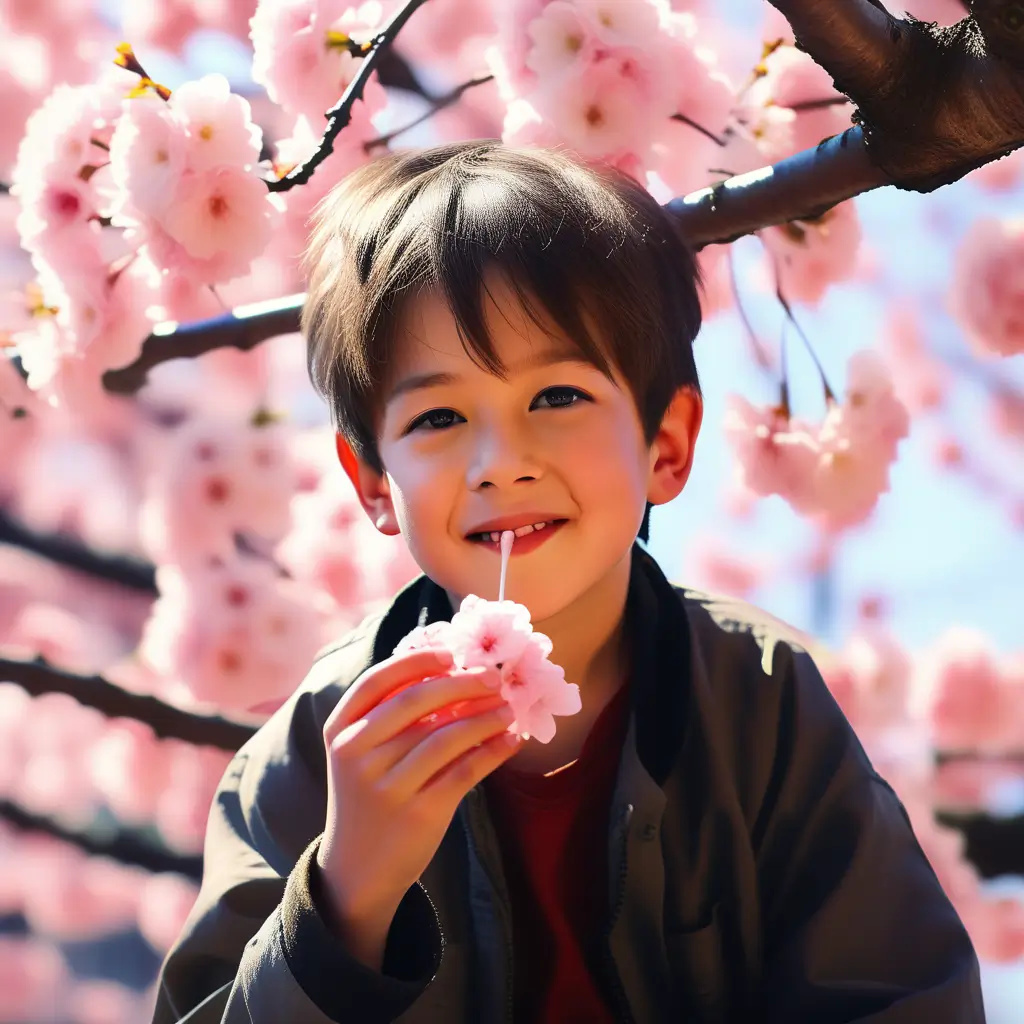Cherry blossoms signal the arrival of spring. These flowers bloom for a short time each year, gracing parks and gardens with beautiful pink and white flowers.
Cherry blossom season draws crowds eager to see the flowers and participate in cherry blossom festivals. With their abundance and beauty during the season, you may be wondering:
Are cherry blossoms edible?
The short answer is yes, cherry blossoms are edible. Keep reading to learn more about:
- What part of cherry trees blossom
- Are the flowers and leaves edible
- What cherry blossoms taste like
- How to eat cherry blossoms
- Health benefits and risks
- And more
What Part of Cherry Trees Produce Cherry Blossoms?
To understand if cherry blossoms are edible, it helps to know what they are and where they come from.
Cherry blossoms grow on flowering cherry trees, including:
- Yoshino cherry trees – most common for ornamental cherry blossom trees
- Japanese cherry trees
- Korean cherry trees
These flowering trees produce the beloved cherry blossoms in early spring, March to April depending on latitude and climate:
The blossoms turn into cherries later in spring and summer after pollination. Cherry blossoms are the flowers of cherry trees. They bloom briefly before new leaves emerge and fruit develops for an all too short period in the season.
People often wonder if these iconic flowers are as tasty as they are beautiful while in peak bloom.
Are the Flowers and Leaves of Cherry Blossoms Edible?
The flowering branches and petals of ornamental cherry trees are edible for humans. So you can try them if desired! In addition, the young spring leaves of flowering cherry trees can be eaten as well.
So cherry blossoms flowers and leaves are edible. But what do they actually taste like?

What Do Cherry Blossoms Taste Like?
The flavor of edible cherry blossoms may underwhelm those expecting a sweet cherry taste.
The light pink or white petals have a mildly floral, slightly sweet flavor:
- Subtle honey-like fragrance
- Fresh, grassy aroma
- Crunchy, slightly fibrous texture
- Very delicate cherry taste with a hint of bitterness
This bitterness comes from the compounds called amygdalin that give the blossoms their colors and almond notes.
If plucked early before fully blooming, cherry blossoms tend to be milder in flavor. Fully open petals may develop more bitterness.
Meanwhile, the young green leaves of cherry trees taste bitter and almond-like when eaten fresh. Cooking them can mellow out the bitterness.
So while edible, raw cherry blossoms and leaves are generally more mild than strongly flavored. Their appeal comes from their graceful beauty and delicate essence of spring.
How To Eat Edible Cherry Blossoms
Now that you know blossoms and leaves of ornamental cherry trees are edible, how do you go about tasting them? Here are some tips:
Picking and Preparing Blossoms
- Look for freshly bloomed flowers in peak condition
- Gently pluck flower clusters early morning after dew dries
- Inspect for dirt, damage, or insects
- Shake gently & refrigerate soon to maximize freshness
Serving Edible Flowers
Popular ways to eat edible cherry blossoms include:
- Garnishing dishes – Toss whole petals into:
- Salads
- Soups & broths
- Spring rolls
- Rice
- Desserts
- Drinks
- Infusing flavors – Place petals in:
- Vinegars
- Teas
- Lemonades & sodas
- Alcohols like saké
- Preserving – Make:
- Jams
- Pickles
- Candies
- Marshmallows
Cherry blossom flavors complement Japanese cuisine very well. The petals also work nicely with creamy desserts.
Go light when adding petals to let their delicate essence shine through without overpowering a dish.
Eating Leaves
The young, vivid green leaves of cherry trees shine with fresh spring flavor when eaten, but their bitterness means they’re often cooked first.
Popular ways to eat the leaves:
- Sauté them
- Make infused vinegars
- Pickle them
- Use as edible wrappers
Nutrition Facts and Health Benefits
Besides their fleeting beauty and whimsical essence of spring, cherry blossoms offer dietary and medicinal benefits:
Nutrients & Antioxidants
- High water content
- Negligible calories
- Rich in Vitamin C, carotenoids, and phenolic compounds with antioxidant activity
Antioxidants combat cell damage from free radicals to reduce risk of chronic illnesses like heart disease and cancer.
Traditional Medicinal Uses
Cherry blossom components:
- Amygdalin
- Flavonoids
- Triterpenoids
- Anthocyanins
These beneficial plant chemicals give the blossoms anti-inflammatory, anxiety-reducing, and anticancer effects.
In traditional Chinese and Japanese medicine, practitioners use cherry blossoms to treat:
- High blood pressure
- Arthritis
- Gout
- Eczema
- Respiratory infections
So while the petals don’t offer much filling fiber or protein, their rich phytochemicals provide nutritional and medical benefits.
Risks and Precautions With Eating Cherry Blossoms
Eating cherry blossoms and leaves appears safe for most people. But take these precautions:
- Eat in moderation at first to watch for allergic reactions
- Don’t consume fallen petals on ground as they can grow mold
- Monitor for minor stomach upset if you eat too many
- Pick from trees you know are not treated with pesticides
- Cherry seeds inside fruits contain trace cyanide compounds
For those with autoimmune disorders, introduce edible flowers slowly under doctor supervision due to inflammation risks.
In general, contact your healthcare provider with any concerns over eating cherry blossoms based on your medical history.
The Takeaway: Cherry Blossoms Are Edible
During their all too brief bloom, cherry blossom flowers and leaves provide a sensory experience with flavor to match their deciduous beauty.
While milder in taste than their fruit counterparts, edible cherry blossoms impart floral, honey-like notes with health benefits as well.
Add these ephemeral edible flowers and leaves to spring dishes and beverages for seasonal delight with little risk. Or simply enjoy their beauty knowing cherry blossoms are yet another gift from ornamental cherry trees.
Frequently Asked Questions
Cherry blossoms grow on flowering ornamental cherry trees like Yoshino, Japanese, and Korean cherry trees. These bloom early spring before yielding fruit later in season.
Most ornamental cherry trees produce edible flowers, including popular Yoshino and Japanese cherry varieties. Avoid wild cherry tree flowers as some contain cyanide.
Yes! After pollination, most flowering cherry trees produce small sour cherries in late spring and summer. Cherries take longer to fruit after the early bloom.
The flowers precede cherries so don’t impart much sweet fruit flavor. Blossoms offer mild honey-floral notes while cherries bring that fruity burst of sweet/tart juice later on. Both edible though!
No! Only consume freshly picked blossoms right off trees. Fallen petals lose freshness quickly and can harbor dirt and mold spores making them unsafe to eat.
